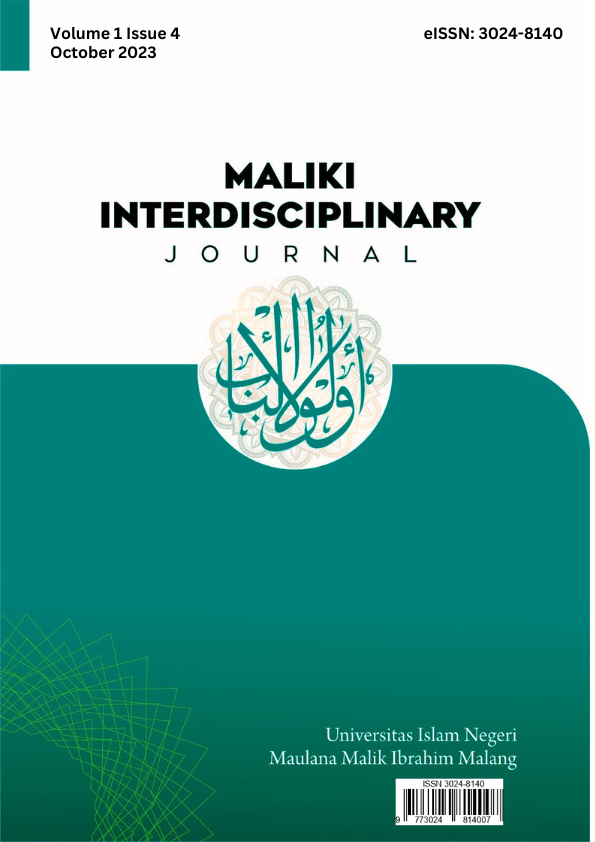Implementasi passive aggressive classifier untuk mendeteksi berita fake atau real
Abstract
The proliferation of fake news or hoaxes has become an increasingly pressing issue in today's digital information era. To address this problem, an effective and efficient detection algorithm is necessary. In this study, we propose the implementation of the Passive Aggressive Classifier to identify fake or real news. The Passive Aggressive Classifier is an adaptive machine learning algorithm capable of classifying data online by adjusting to emerging patterns. A dataset consisting of fake and real news is used to train the detection model. The implementation process involves text vectorization using the TF-IDF scheme and model training using the Passive Aggressive Classifier algorithm. The model's performance is evaluated using standard metrics such as accuracy, precision, recall, and F1-score. The research findings demonstrate that the implementation of the Passive Aggressive Classifier is capable of accurately detecting fake news. Consequently, this approach can be employed as an effective solution to swiftly and accurately counteract the spread of fake news
Downloads
References
Abdulrahman, A., & Baykara, M. (2020). Fake News Detection Using Machine Learning and Deep Learning Algorithms. 3rd International Conference on Advanced Science and Engineering, ICOASE 2020, 18–23. https://doi.org/10.1109/ICOASE51841.2020.9436605
Ahmed, S., Hinkelmann, K., & Corradini, F. (2022). Development of Fake News Model using Machine Learning through Natural Language Processing. 14(12), 454–460. http://arxiv.org/abs/2201.07489
Bounabi, M., El Moutaouakil, K., & Satori, K. (2019). Text classification using Fuzzy TF-IDF and Machine Learning Models. ACM International Conference Proceeding Series. https://doi.org/10.1145/3372938.3372956
Chumairoh, H. (2020). Ancaman Berita Bohong di Tengah. Vox Populi, 3(1), 22–30. http://journal.uin-alauddin.ac.id/index.php/voxpopuli/article/view/14395
Faisal, M., Nugroho, F., El Sulthan, M. M., Amini, F., Hariyadi, M. A., & Sedayu, A. (2020). Plagiarism detection using manber and winnowing algorithm. International Journal of Advanced Science and Technology, 29(6 Special Issue), 2130–2136.
Hanani, A. (2008). Rancang Bangun Sistem Informasi Akademik Online Universitas Islam Negeri Malang. 140.
Imbwaga, J. L., Chittaragi, N., & Koolagudi, S. (2022). Fake News Detection Using Machine Learning Algorithms. ACM International Conference Proceeding Series, 9(3), 271–275. https://doi.org/10.1145/3549206.3549256
Mandical, R. R., Mamatha, N., Shivakumar, N., Monica, R., & Krishna, A. N. (2020). Identification of Fake News Using Machine Learning. Proceedings of CONECCT 2020 - 6th IEEE International Conference on Electronics, Computing and Communication Technologies. https://doi.org/10.1109/CONECCT50063.2020.9198610
Popek, M., Swiatek-Najwer, E., Majak, M., Jaworowski, J., & Szram, D. (2014). Navigated surgical tools calibration issue in computer aided tumor resection procedures. Computational Vision and Medical Image Processing IV - Proceedings of Eccomas Thematic Conference on Computational Vision and Medical Image Processing, VIPIMAGE 2013, 7, 331–336. https://doi.org/10.1201/b15810-63
Pratama, R. P., Faisal, M., & Hanani, A. (2019). Deteksi Plagiarisme pada Dokumen Jurnal Menggunakan Metode Cosine Similarity. SMARTICS Journal, 5(1), 22–26. https://doi.org/10.21067/smartics.v5i1.2848
Rahmatullah, T. (2018). Hoax dalam Perspektif Hukum Indonesia. Jurnal Hukum Media Justitia Nusantara, 8(2), 103–111. http://ojs.uninus.ac.id/index.php/MJN/article/view/673/457%0Ahttp://ojs.uninus.ac.id/index.php/MJN/article/view/673
Rathi, M., Malik, A., Varshney, D., Sharma, R., & Mendiratta, S. (2018). Sentiment Analysis of Tweets Using Machine Learning Approach. 2018 11th International Conference on Contemporary Computing, IC3 2018, 2–4. https://doi.org/10.1109/IC3.2018.8530517
Riadi Silitonga, Y. (2019). Sistem Pendeteksi Berita Hoax di Media Sosial dengan Teknik Data Mining Scikit Learn. Jurnal Ilmu Komputer, 4, 173. www.beritasatu.com,
Tripathy, A., Agrawal, A., & Rath, S. K. (2015). Classification of Sentimental Reviews Using Machine Learning Techniques. Procedia Computer Science, 57, 821–829. https://doi.org/10.1016/j.procs.2015.07.523
University of Peradeniya. Department of Electrical and Electronics Engineering, IEEE Sri Lanka Section. Central Region Subsection, IEEE Sri Lanka Section, Institute of Electrical and Electronics Engineers. Kharagpur Section, & Institute of Electrical and Electronics Engineers. (2019). SentimentAnalysisin Tamil Texts: AStudyonMachineLearningTechniquesand FeatureRepresentation. 18–20.
Villagracia Octaviano, M. (2021). Fake News Detection Using Machine Learning. ACM International Conference Proceeding Series, 177–180. https://doi.org/10.1145/3485768.3485774
Copyright (c) 2023 Muhammad Dafa Wardana

This work is licensed under a Creative Commons Attribution-NonCommercial-ShareAlike 4.0 International License.
- Authors retain copyright and grant the journal right of first publication with the work simultaneously licensed under a Creative Commons Attribution License that allows others to share the work with an acknowledgement of the work’s authorship and initial publication in this journal.
- Authors are able to enter into separate, additional contractual arrangements for the non-exclusive distribution of the journal’s published version of the work (e.g., post it to an institutional repository or publish it in a book), with an acknowledgement of its initial publication in this journal.
- Authors are permitted and encouraged to post their work online (e.g., in institutional repositories or on their website) prior to and during the submission process, as it can lead to productive exchanges, as well as earlier and greater citation of published work.





